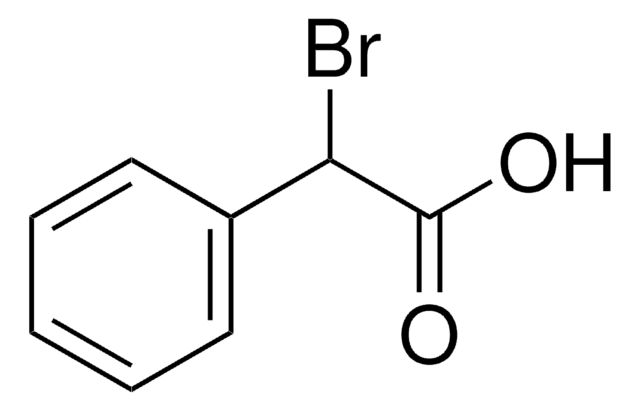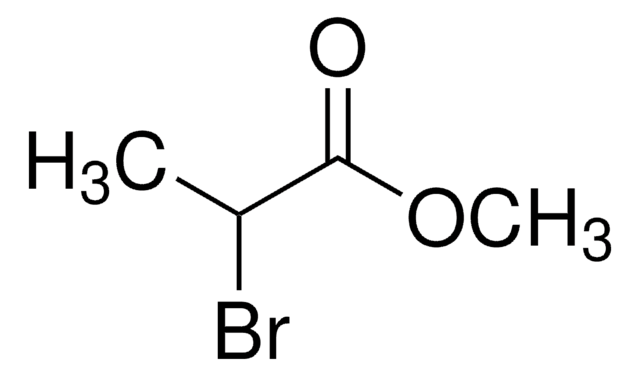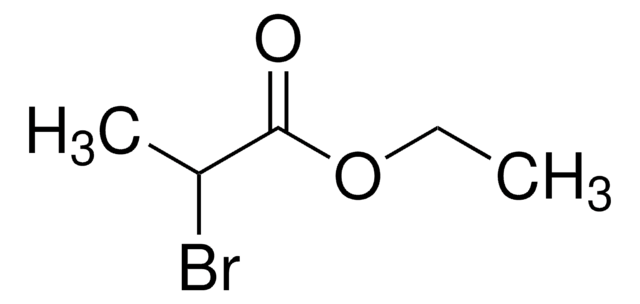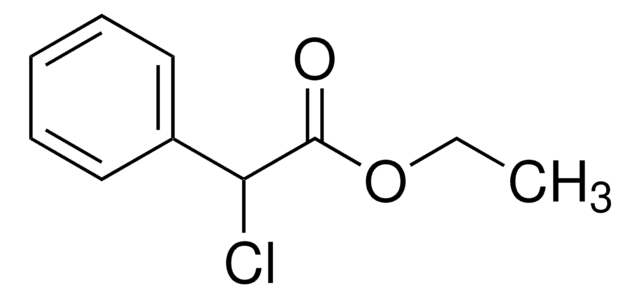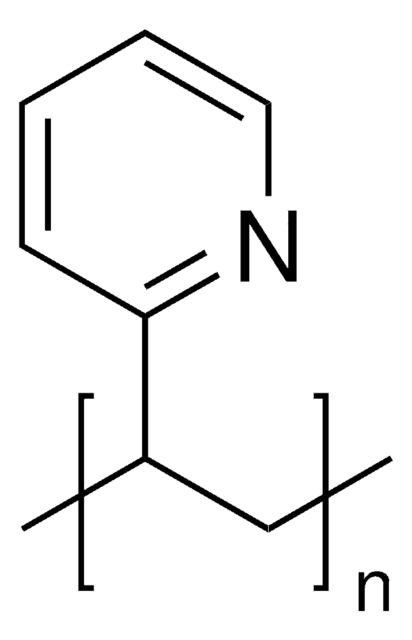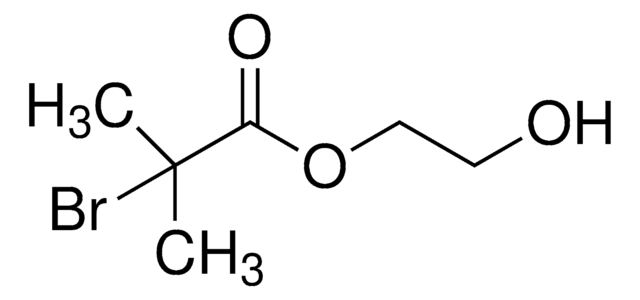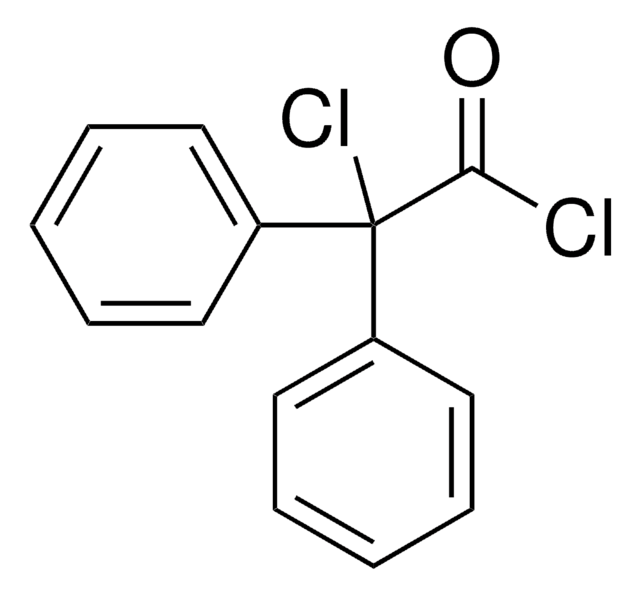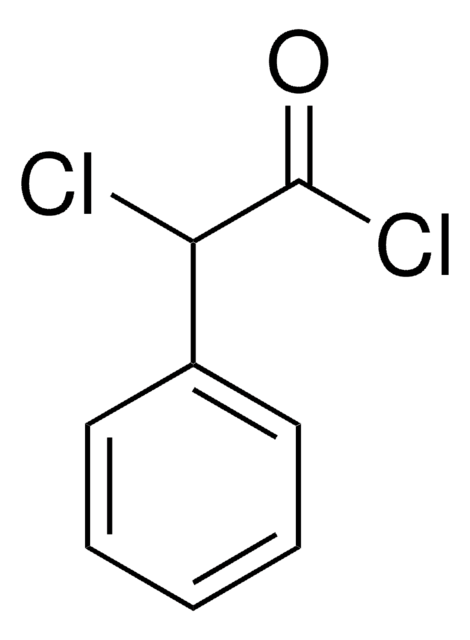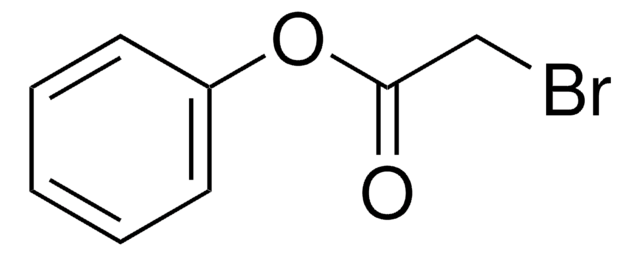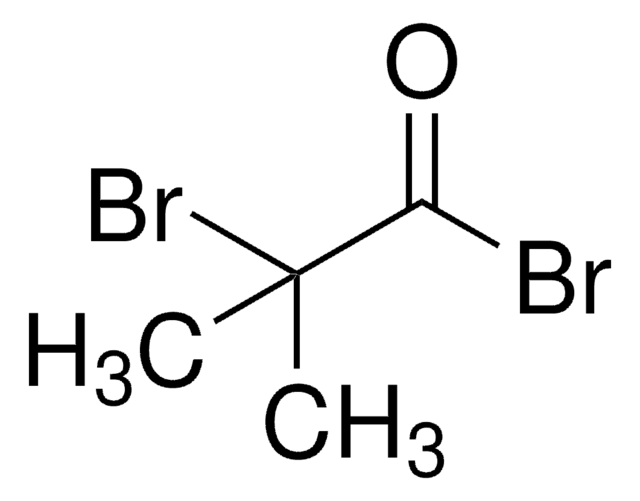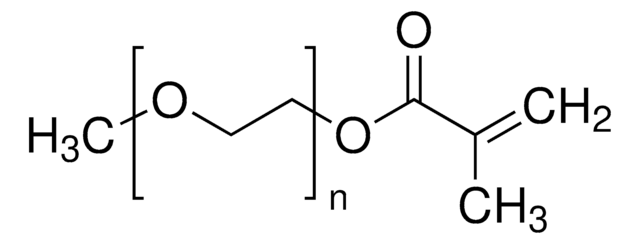554065
Ethyl α-bromophenylacetate
97%
Synonyme(s) :
α-Bromobenzeneacetic acid ethyl ester, α-Bromophenylacetic acid ethyl ester, 2-Bromo-2-phenylacetic acid ethyl ester, Ethyl (±)-α-bromobenzeneacetate, Ethyl 2-bromo-2-phenylacetate, Ethyl 2-bromophenylacetate
About This Item
Produits recommandés
Niveau de qualité
Essai
97%
Indice de réfraction
n20/D >1.5390 (lit.)
pb
89-92 °C/0.9 mmHg (lit.)
Densité
1.389 g/mL at 25 °C (lit.)
Groupe fonctionnel
bromo
ester
phenyl
Chaîne SMILES
CCOC(=O)C(Br)c1ccccc1
InChI
1S/C10H11BrO2/c1-2-13-10(12)9(11)8-6-4-3-5-7-8/h3-7,9H,2H2,1H3
Clé InChI
BKTKLDMYHTUESO-UHFFFAOYSA-N
Catégories apparentées
Application
EBPA may be used as an initiator for the following:
- polymerization of dimethyl(methacryloyloxymethyl) phosphonate
- polymerization of methyl methacrylate (MMA)
- polymerization of trimethylolpropane triacrylate(TMPTA)
Mention d'avertissement
Danger
Mentions de danger
Classification des risques
Eye Dam. 1 - Skin Corr. 1B
Code de la classe de stockage
8A - Combustible corrosive hazardous materials
Classe de danger pour l'eau (WGK)
WGK 3
Point d'éclair (°F)
230.0 °F - closed cup
Point d'éclair (°C)
110 °C - closed cup
Équipement de protection individuelle
Faceshields, Gloves, Goggles, type ABEK (EN14387) respirator filter
Faites votre choix parmi les versions les plus récentes :
Déjà en possession de ce produit ?
Retrouvez la documentation relative aux produits que vous avez récemment achetés dans la Bibliothèque de documents.
Les clients ont également consulté
Notre équipe de scientifiques dispose d'une expérience dans tous les secteurs de la recherche, notamment en sciences de la vie, science des matériaux, synthèse chimique, chromatographie, analyse et dans de nombreux autres domaines..
Contacter notre Service technique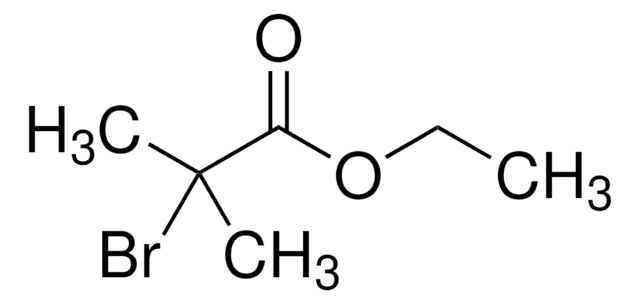

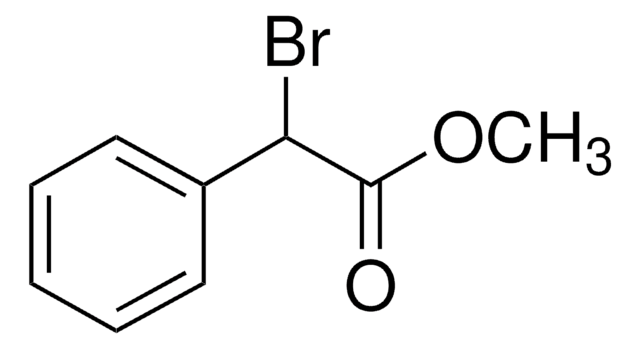
![Tris[2-(dimethylamino)ethyl]amine 97%](/deepweb/assets/sigmaaldrich/product/structures/695/792/ee0ff167-22a3-43a7-83a1-6c4908adf0ae/640/ee0ff167-22a3-43a7-83a1-6c4908adf0ae.png)
